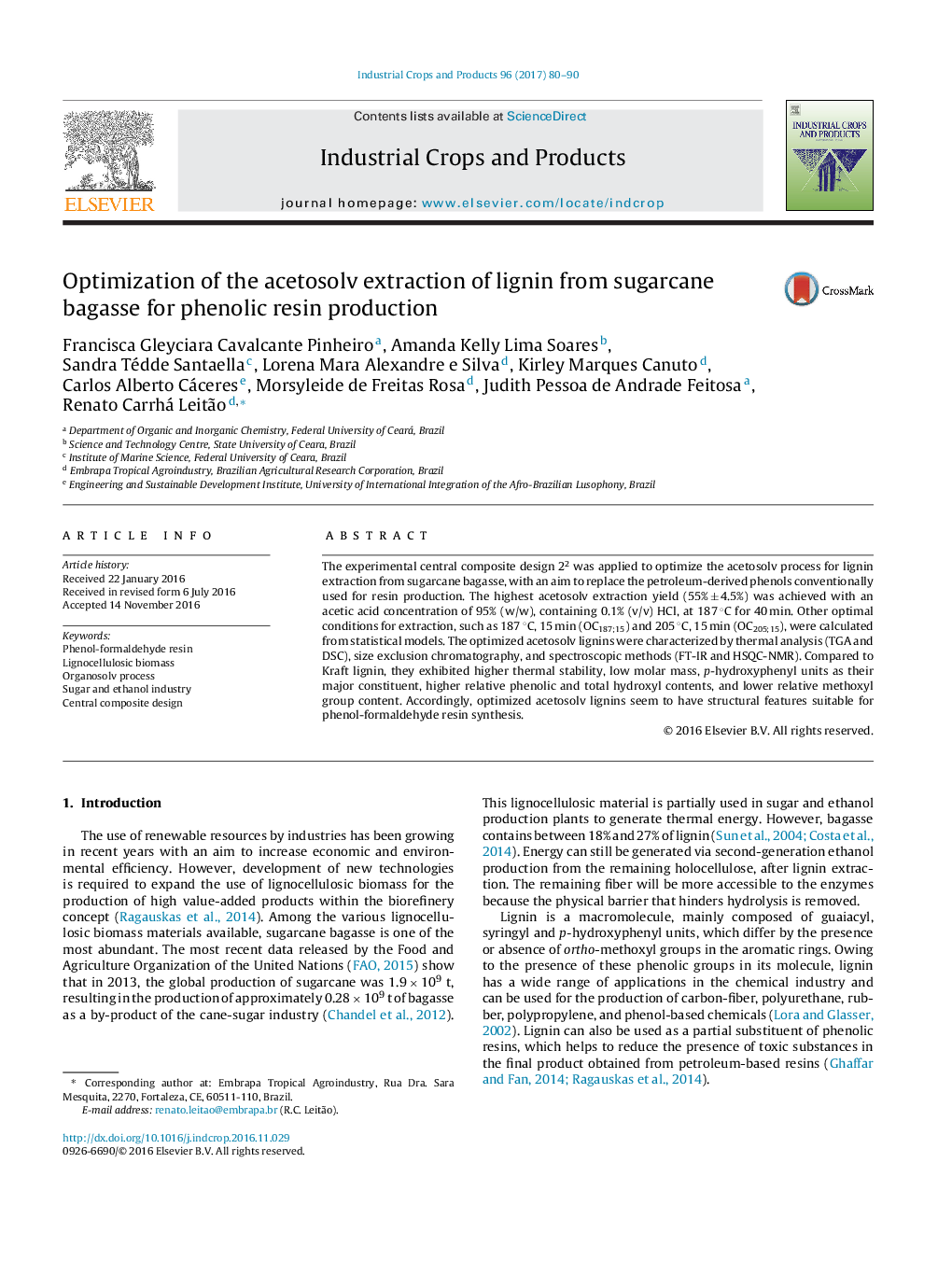| Article ID | Journal | Published Year | Pages | File Type |
|---|---|---|---|---|
| 5761993 | Industrial Crops and Products | 2017 | 11 Pages |
Abstract
The experimental central composite design 22 was applied to optimize the acetosolv process for lignin extraction from sugarcane bagasse, with an aim to replace the petroleum-derived phenols conventionally used for resin production. The highest acetosolv extraction yield (55% ± 4.5%) was achieved with an acetic acid concentration of 95% (w/w), containing 0.1% (v/v) HCl, at 187 °C for 40 min. Other optimal conditions for extraction, such as 187 °C, 15 min (OC187;15) and 205 °C, 15 min (OC205;15), were calculated from statistical models. The optimized acetosolv lignins were characterized by thermal analysis (TGA and DSC), size exclusion chromatography, and spectroscopic methods (FT-IR and HSQC-NMR). Compared to Kraft lignin, they exhibited higher thermal stability, low molar mass, p-hydroxyphenyl units as their major constituent, higher relative phenolic and total hydroxyl contents, and lower relative methoxyl group content. Accordingly, optimized acetosolv lignins seem to have structural features suitable for phenol-formaldehyde resin synthesis.
Related Topics
Life Sciences
Agricultural and Biological Sciences
Agronomy and Crop Science
Authors
Francisca Gleyciara Cavalcante Pinheiro, Amanda Kelly Lima Soares, Sandra Tédde Santaella, Lorena Mara Alexandre e Silva, Kirley Marques Canuto, Carlos Alberto Cáceres, Morsyleide de Freitas Rosa, Judith Pessoa de Andrade Feitosa,
